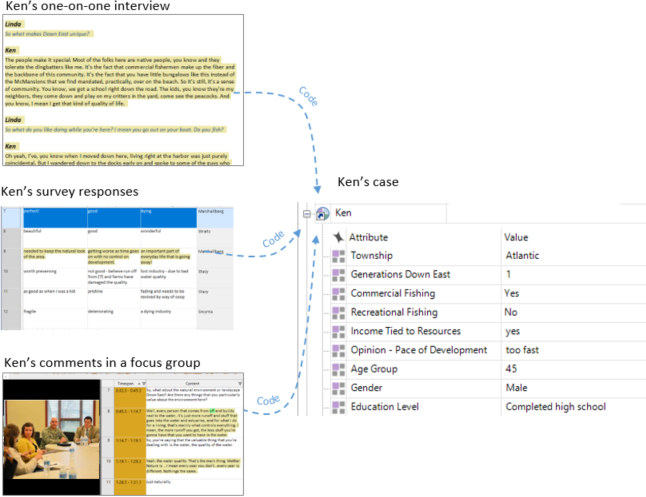Cases
Recap: what is an Nvivo case?
In Nvivo, a case represents a unit of analysis.
This could be:
- people you’ve interviewed,
- events,
- organisations you worked with,
- communities,
- families, etc.
Basically anything you want to organise and compare.
Before you build a new project, you should decide what are your cases/units of analysis.
In this QESB project, we have created cases for every person with a 1-2-1 interview; here you can see Claire’s case highlighted:

and you can see that each person has 1 file associated with them (the interview transcript).
and why do I need cases?
Cases allow you to link information together related to unit. They help you to connect and draw material across your files. They are also very useful if you want to add metadata (e.g. sociodemographic info)
Some examples:
- Connect text from focus groups to cases of individuals;
- Connect photos, maps, audio, to cases of events;
- Connect parliamentary debates to cases of policy /laws.
Here’s an example taken from an Nvivo explainer on cases:

You don’t have to use cases, but doing us unlocks a lot of extra functionality, and it makes a lot of sense if you have anything more than just a few transcripts.

